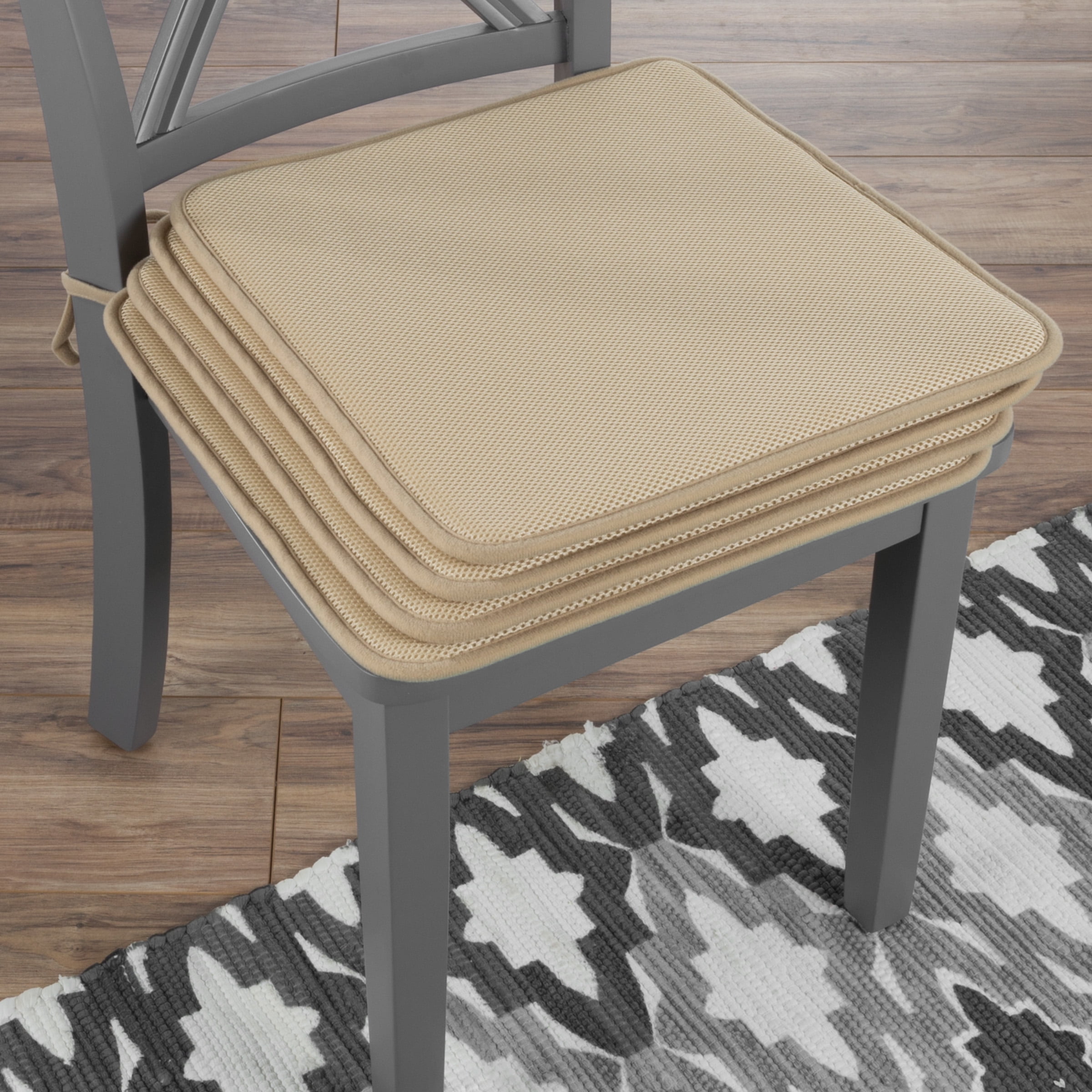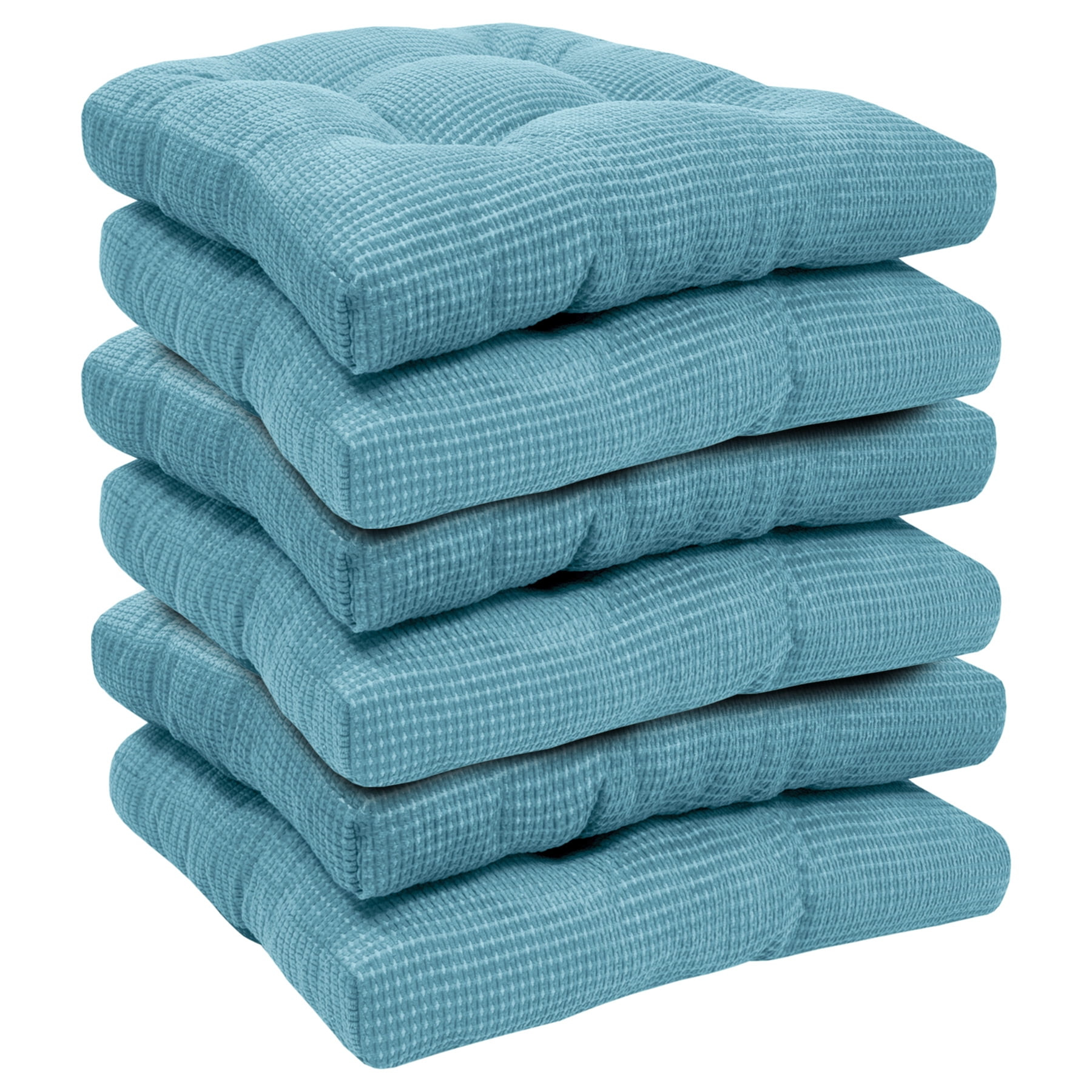Types of Foam for Dining Room Chair Cushions

Choosing the right foam for your dining room chair cushions is crucial for comfort and durability. Different foam types offer unique benefits and drawbacks, impacting your seating experience. Let’s dive into the popular foam types used in dining room chairs.
High-Density Foam
High-density foam is known for its firmness and durability. It’s often used in dining room chairs that require long-lasting support and resilience.
- Pros:
- Provides excellent support and maintains its shape over time.
- Resistant to sagging and compression.
- Ideal for high-traffic areas like dining rooms.
- Cons:
- Can feel firm and less comfortable for extended periods.
- May be more expensive than other foam types.
- Examples:
- Mid-century modern dining chairs with a minimalist design often use high-density foam for their cushions.
- Leather dining chairs that emphasize durability and longevity often incorporate high-density foam.
Memory Foam
Memory foam is known for its ability to conform to the shape of your body, providing a personalized and pressure-relieving experience.
- Pros:
- Provides exceptional comfort and pressure relief, especially for individuals with back pain.
- Conforms to your body’s shape, offering personalized support.
- Cons:
- Can feel warm and potentially trap heat, especially in warmer climates.
- May not be as durable as other foam types and can sag over time if not properly supported.
- Can be more expensive than other foam types.
- Examples:
- Modern dining chairs with plush, contoured cushions often use memory foam.
- Chairs designed for long periods of sitting, like office chairs, sometimes incorporate memory foam for added comfort.
Polyurethane Foam
Polyurethane foam is a versatile and widely used foam type, available in various densities and firmness levels.
- Pros:
- Offers a balance of comfort and support at an affordable price.
- Available in a wide range of densities and firmness levels to suit different preferences.
- Relatively durable and resistant to wear and tear.
- Cons:
- May not be as comfortable or supportive as high-density or memory foam.
- Can sag over time, especially if exposed to excessive weight or heat.
- Examples:
- Traditional dining chairs with upholstered cushions often use polyurethane foam.
- Budget-friendly dining chairs often incorporate polyurethane foam for affordability.
Latex Foam
Latex foam is known for its natural origin, resilience, and breathability. It’s a popular choice for those seeking a comfortable and supportive seating experience.
- Pros:
- Provides excellent support and conforms to your body’s shape.
- Highly breathable, reducing heat buildup and promoting airflow.
- Naturally hypoallergenic and resistant to dust mites.
- Highly durable and resistant to sagging.
- Cons:
- Can be more expensive than other foam types.
- May have a distinct, rubbery odor that can be off-putting for some.
- Examples:
- High-end dining chairs with luxurious upholstery often incorporate latex foam for comfort and durability.
- Chairs designed for individuals with allergies or sensitivities may use latex foam for its hypoallergenic properties.
Choosing the Right Foam Density for Comfort and Durability

Choosing the right foam density for your dining room chair cushions is crucial for ensuring both comfort and longevity. Foam density, measured in pounds per cubic foot (PCF), directly impacts how firm or soft your cushions feel and how well they hold their shape over time.
Foam Density Ranges for Different Usage Patterns, Foam for dining room chair cushions
The ideal foam density for your dining room chair cushions depends on how frequently you use them and the desired seating experience. Here’s a breakdown of foam density ranges for different usage patterns:
- For chairs used frequently: If you dine at home regularly, opt for a foam density between 2.0 and 2.5 PCF. This range offers a balance of comfort and support, preventing the cushion from becoming too soft or losing its shape quickly.
- For chairs used occasionally: For dining chairs used less frequently, a foam density between 1.8 and 2.0 PCF is a good choice. This density provides a softer, more comfortable feel without compromising durability.
- For chairs with specific design requirements: For chairs with curved backs or armrests, you might need to consider a slightly higher foam density, such as 2.5 to 3.0 PCF. This ensures the cushion conforms to the shape of the chair and provides adequate support.
Tips for Selecting the Appropriate Foam Density
- Personal preferences: Consider your own seating preferences. Do you prefer a firmer or softer cushion?
- Desired seating experience: If you want a cushion that provides good support and doesn’t sag quickly, choose a higher density foam. For a softer, more comfortable feel, opt for a lower density foam.
- Chair style: The style of your chair can also influence the appropriate foam density. For example, chairs with a simple, minimalist design might benefit from a lower density foam, while chairs with elaborate details might require a higher density foam to maintain their shape.
Foam Cushioning Design and Construction: Foam For Dining Room Chair Cushions

Dining room chairs come in a variety of styles and designs, and the cushioning is an important aspect that affects both comfort and aesthetics. Different foam cushioning designs and construction techniques are employed to create the desired level of comfort, support, and durability for dining room chairs.
Layered Foam Construction
Layered foam construction is a popular technique for dining room chair cushions, offering a combination of comfort and support. This method involves using multiple layers of foam with varying densities and thicknesses. The bottom layer typically consists of a denser foam for support, while the top layer uses a softer foam for comfort.
- Benefits: Layered foam construction provides a balance of comfort and support, ensuring a pleasant dining experience. The different densities of foam offer a more gradual transition, adapting to the user’s body shape and weight distribution. This results in a more comfortable and supportive seating experience.
- Drawbacks: While layered foam construction is effective, it can be more expensive than single-layer foam cushions. Additionally, the layering process can be more complex and require greater precision, which might contribute to a higher production cost.
Foam with Fiberfill or Down Filling
Adding fiberfill or down filling to foam cushions can enhance comfort and provide a more luxurious feel. Fiberfill is a synthetic material that resembles cotton, while down is a natural material derived from waterfowl.
- Benefits: Fiberfill or down filling adds a soft and plush texture to the cushion, making it more comfortable and inviting. They also offer excellent breathability, allowing air to circulate and prevent the cushion from feeling hot or stuffy. This is particularly beneficial in warmer climates.
- Drawbacks: Fiberfill or down filling can be more prone to clumping or shifting over time, requiring occasional fluffing to maintain its shape and comfort. Down is also more expensive than fiberfill and requires more care, such as regular cleaning and drying.
Foam with Gel Inserts
Gel inserts are often incorporated into foam cushions to provide additional comfort and pressure relief. These inserts are typically made of a gel-like material that conforms to the body’s shape, reducing pressure points and improving circulation.
- Benefits: Gel inserts are particularly beneficial for individuals who experience discomfort or pain when sitting for extended periods. They provide a cooling effect, dissipating heat and reducing sweating, especially during hot weather. This feature can enhance the comfort and enjoyment of dining experiences.
- Drawbacks: Gel inserts can be more expensive than traditional foam cushions. They can also be more prone to damage, particularly if they are not properly cared for.
The right foam for dining room chair cushions can make all the difference in comfort and longevity. Choosing a high-density foam will provide lasting support, while a softer foam can offer a more plush feel. For a stylish and versatile option, consider pairing your foam cushions with a shadow gray dining chair.
This classic color complements a wide range of decor styles, making it a great choice for any dining room. Ultimately, the perfect foam for your dining room chair cushions will depend on your individual preferences and the overall design aesthetic you’re aiming for.
The right foam for dining room chair cushions can make a world of difference in comfort, especially when paired with a stylish and durable chair like the project 62 metal x back dining chair. This chair’s sleek design and sturdy construction benefit from the added support and plushness that high-quality foam provides, ensuring a comfortable dining experience for hours on end.
Choosing the appropriate density and thickness of foam is key to achieving the desired level of comfort and longevity for your dining room chair cushions.
